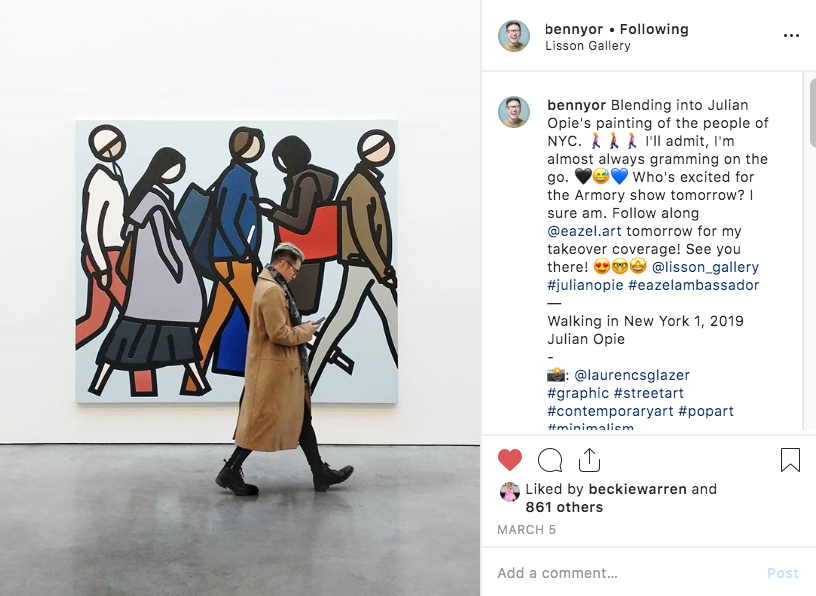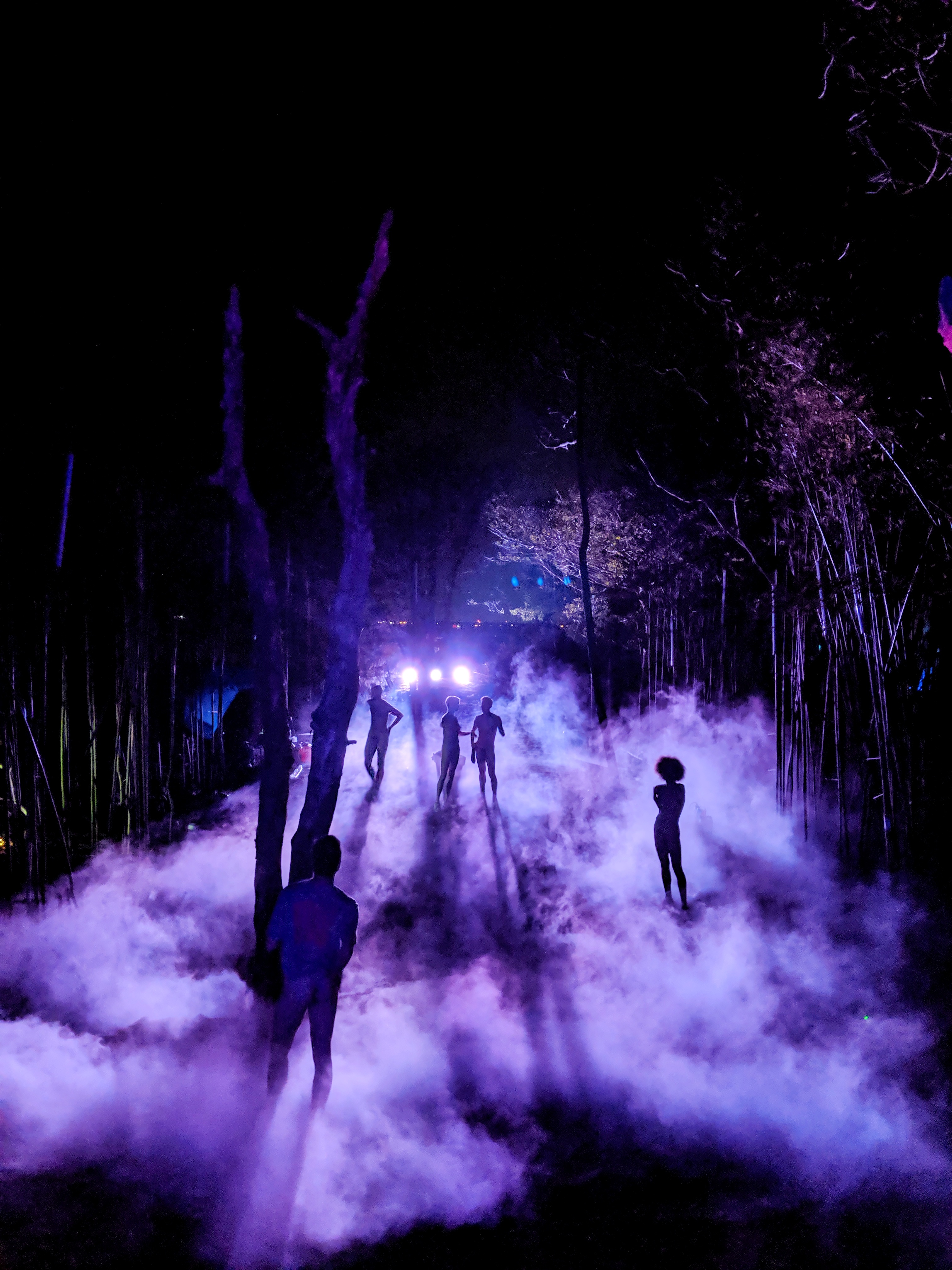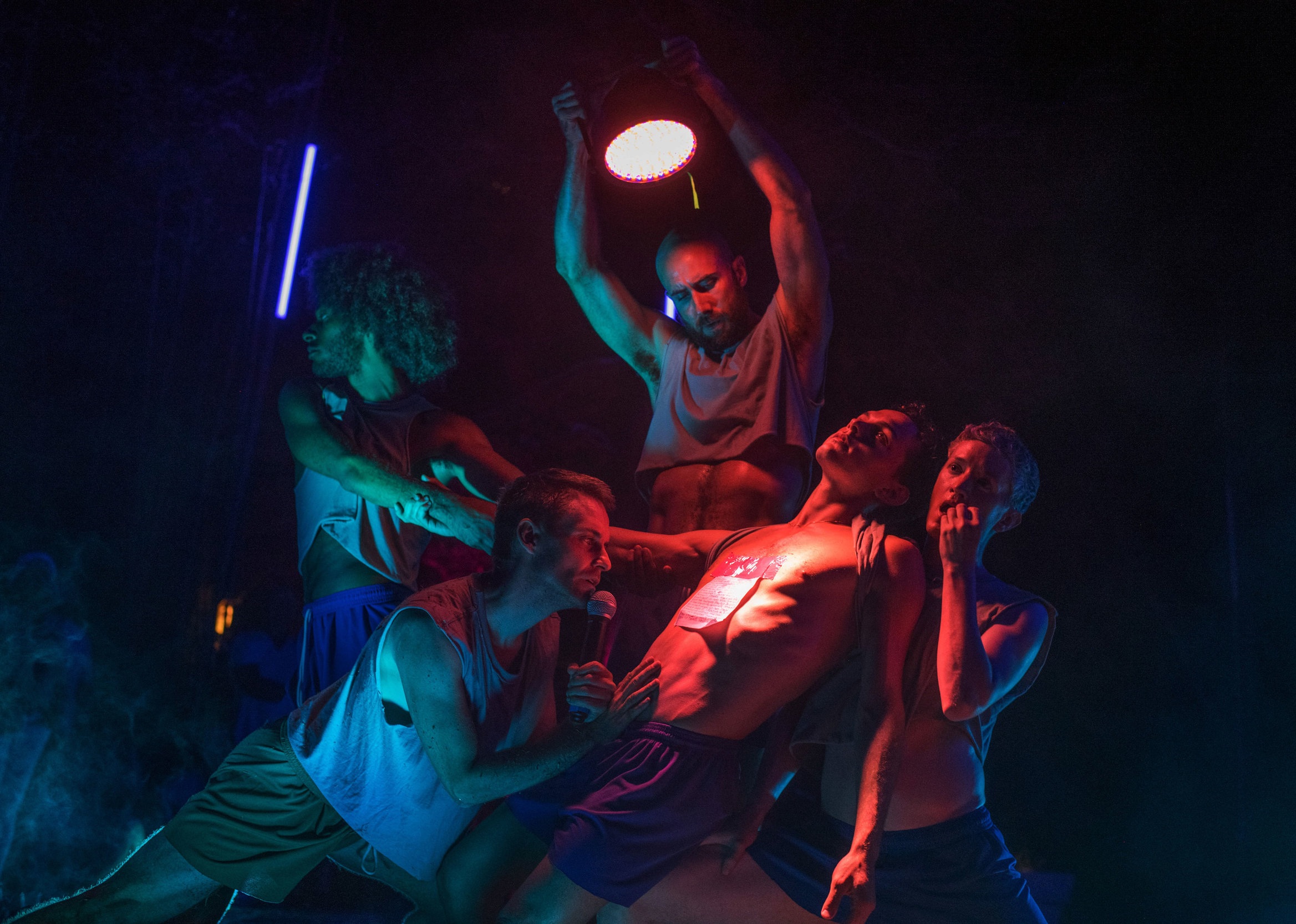Will Benny Or Innovate Environmental Design in the Art World?


With a background in architecture and environmental design, Benny Or is a creative director at Fireplay, a production studio that creates innovative spaces for music, events, and theater worldwide. In 2014, he opened an Instagram account, @bennyor, dedicated to art and has since become an important influencer in the New York art scene. During the summer he scaled-down and forayed into providing support for a performance artwork by Ryan McNamara. The event marked the first merger of his practice in production design and the art world. We believe that he can be the next big thing to innovate environmental design in the art world, and beyond.
Art is increasingly being incorporated into design and marketing efforts at mainstream companies in attempts to increase sales and to build cachet. Louis Vuitton, for example, is a trailblazer in this aspect as they in recent years have collaborated with artists to reinterpret their Monogram canvas, enhance product design, create ad campaigns, window displays and architectural concepts for their stores. As is Twitter who have a full-time Arts and Culture liaison, Ariel Adkins, who initiates socially engaged collaborations with artists to be shown on #AWallForACause in their New York headquarters. When General Motors opened their Cadillac office in New York the bottom floor housed an art gallery mainly focused on Instagrammable immersive exhibitions to attract visitors. There are countless more and less successful cases to prove that both people and companies thirst for tantalizing environments and experiences.
Hybrid creatives like Or who can bridge the art world with the corporate world with integrity and fresh ideas are much needed. As Or is at the precipice of expanding his creative practice Cultbytes took the time to ask him some questions about his career so far.
Most art-world career paths are winding rather than formulaic and using one’s talent to execute projects beyond the company or institution one might work for is a norm. Taking these multiplicities into consideration: As a professional, what are you?
Most people don’t know it but art blogging is my passion project. During office hours, I am the associate creative director at Fireplay, a creative studio where I come up with staging concepts for live entertainment. My day to day varies a lot from coming up with ideas for an SNL performance to designing props for a theatre show. It’s creatively demanding and also a whole lot of fun.
What was your first introduction to environmental design? And, what is it and where do you think it is going?
I studied architecture at the University of Waterloo and that was where I first learned to think critically about space. When I realized I wasn’t interested in designing buildings, I started interning for theater consultants and design studios that focused on the performing arts. My first foray into production design was under the big top for Cirque Du Soleil. It’s a great story but a long one. Ultimately, I found my way into an internship with scenic designer Scott Pask when he was working on Amaluna in Montreal. It was less than two weeks and I mostly observed but I learned a lot and I can’t thank Scott enough to this day.
Cool. From Cirque de Soleil to the Ringlings Brother’s. A few years ago I worked on an exhibition about the circus in New York City at the Bard Graduate Center. Our research began with John Bill Rickett’s equestrian showcase in the late 18th century in Greenwich Village moving through the animal acts, acrobatics, and the freak shows developed by menageries and transitory groups. For a long time, the circus was one of America’s most popular art forms and still serves as an influence on culture. How was it working on the Ringling Brother’s show?
Magical. But to be honest, it wasn’t easy at first. Trained as an architect and a minimalist, “whimsy” was not an aesthetic that I was comfortable with. After a while, I learned to let go and have fun with it. The theme of the show was space travel, so it really was a kid’s dream job. Every day I would be sketching jetpacks, ray guns, and magical telescopes. I’m particularly fond of my spaceship clown car fashioned out of scrap metal.
When you working on the design did you take into consideration that it would be their last?
When Josh Zangen and I were working on the show, we had no idea it was going to be the final one. Looking back, it’s bittersweet knowing that it would end up being the great American circus’ very last clown car.
 Previous: Benny Or. Photographed by Alexander McMichael. Above: Billie Eilish, When We All Fall Asleep Where Do We Go Tour, 2019. Environmental design by Fireplay and Cour Design. Photographs courtesy of Benny Or.
Previous: Benny Or. Photographed by Alexander McMichael. Above: Billie Eilish, When We All Fall Asleep Where Do We Go Tour, 2019. Environmental design by Fireplay and Cour Design. Photographs courtesy of Benny Or.
You’ve also worked with Lil’ Wayne, the Asian Games opening ceremony, Carrie Underwood…the list goes on. I really liked the stage that you created for Billie Eilish’s “When We All Fall Asleep Where Do We Go” tour. What does the artistic process look like putting these types of large-scale set-designs together?
Thank you but there’s a whole team involved in a production like that. Billie’s tour was a collaborative effort between Cour Design and Fireplay and my involvement happened only in the very beginning stages of the process. After speaking with the Billie, the Cour guys briefed us on a rough idea of an immersive video environment with a moving bed. My job was to then turn the napkin sketch into a reality: modeling the idea in 3D and putting together a package of renderings and references to be presented to Billie and her management team. Thankfully, Billie loved it and then our talented team of lighting and technical designers turned the concept into something that was actually buildable. A company called Comix was later hired to design all the video content and they really did an amazing job bringing Billie’s ideas to life.

Benny Or’s Instagram.
In 2018 you were listed by Artnet as one of the top ten art influencer accounts to follow on Instagram. When did it start and how did your personal account transform into the important platform it is today?
Four years ago, I was living in Lancaster, Pennsylvania working for a production design studio with clients like Lil’ Wayne and iHeart Radio Music Festival. Even though the projects were exciting, the countryside didn’t give me the inspiration that I needed. Out of necessity, I started taking myself on art adventures in the neighboring cities. The Instagram account was a way for me to document and share my findings. It all grew organically after I moved back to New York City and continued to go see art. When I started receiving comments and messages from strangers all over the world thanking me for keeping them inspired, I realized that there was a larger purpose to my account than just documentation. The Artnet article caught me totally by surprise and things really started to pick up after that.
Designers are constantly aware of the impact of space. What they can offer are insights on how staging and lighting can contribute to the dialogue between the performer and spectator. – Benny Or
I love it when the media helps propel careers forward. Moving on, performance artists do not often work with designers to present their work. How can working with an environmental designer enhance it?
It all comes down to what the artist is trying to say. Not all performances need an environmental designer. All Marina Abramovich needed to be present was a chair and a table. Designers are constantly aware of the impact of space. What they can offer are insights on how staging and lighting can contribute to the dialogue between the performer and spectator.
When should performers get in touch with you? When the performance is finished or during the process?
Definitely before! Again, particularly when it comes to performance art, the last thing you want is something that is superfluous and distracting. There’s no harm in brainstorming and seeing what fits. Most performance artists have an idea of what they want already and it’s just about making that idea come to life.

 Previous and above: Ryan McNamara, BOFFO, 2019. Environmental design by Benny Or. Photographed by Nir Arieli courtesy of Benny Or.
Previous and above: Ryan McNamara, BOFFO, 2019. Environmental design by Benny Or. Photographed by Nir Arieli courtesy of Benny Or.
Last time I saw you showed me the environmental design for “Ryan McNamara: BOFFO” on Fire Island. It was simple but changed the atmosphere completely with hanging lights and smoke as main features to create an otherworldly and mysterious scene. Was this your first art-world project and how was it?
Yes! It was my first art-world project and it was incredible! It was such an interesting learning experience working with Ryan. In concert touring, everything is planned to the half-second, but I quickly learned that in working with performance art, it is more about creating an organized environment for chaos to occur. Ryan was very open to ideas and the only requests that he had were movable lights and fog. What I added to the environment was a sense of place.
You grew up in Canada but you were born in and your family is from Hong Kong. How does that play a role in who you are today?
Like many, I struggle with my heritage a lot. As a first-generation Chinese immigrant…being Asian was something that I saw as a hindrance, a constant reminder that I was not like the others. I resented it a lot and I did everything I could to assimilate. Nowadays, I’m realizing that what makes me unique is actually to my advantage and I’m learning to celebrate that.
What is your dream project?
My dream project would be to work on something that pertains to the senses. Entertainment is still largely a visual auditory experience but I believe that perception is actually much more complex than that. Particularly in concert touring, the solution is often more is more. My dream would be to collaborate with an artist where we throw all our preconceptions of what a show is out the door and start from scratch.
And finally, what is your favorite environment in New York?
The Turrell Skyspace at MoMA PS1. It’s a noisy city and being in that space is like an escape. If you can get tickets to the sunset experience, I would highly recommend it.
You Might Also Like
Long Dead But Not Forgotten: Art Lovers and Fashion Brands Sanctify Basquait
Twitter Celebrates Black History Month on #AWallForACause: An Interview with Dominique Duroseau
What's Your Reaction?
Anna Mikaela Ekstrand is editor-in-chief and founder of Cultbytes. She mediates art through writing, curating, and lecturing. Her latest books are Assuming Asymmetries: Conversations on Curating Public Art Projects of the 1980s and 1990s and Curating Beyond the Mainstream. Send your inquiries, tips, and pitches to info@cultbytes.com.

